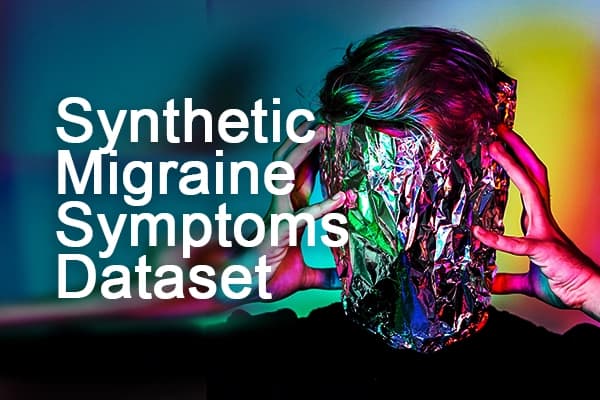Synthetic Migraine Symptoms and Patient Records Dataset
Patient Health Records & Digital Health
Tags and Keywords
Trusted By




"No reviews yet"
£79.99
About
The Synthetic Migraine Symptoms and Patient Records Dataset is a large, anonymised dataset generated for research and educational purposes. It captures symptom patterns, sensory experiences, and neurological indicators in individuals experiencing migraines, enabling analysis of symptom profiles, migraine types, and possible diagnostic patterns.
Dataset Features
- Age: Age of the individual experiencing migraines (in years).
- Duration: Duration of migraine episodes (in hours).
- Frequency: Number of migraine episodes per month.
- Location: Location of pain (coded integers representing regions such as frontal, temporal, occipital, etc.).
- Character: Nature of pain (coded integers indicating throbbing, stabbing, dull, etc.).
- Intensity: Pain intensity level (numeric scale).
- Nausea: Presence of nausea during migraine episodes (True/False).
- Vomit: Presence of vomiting (True/False).
- Phonophobia: Sensitivity to sound (True/False).
- Photophobia: Sensitivity to light (True/False).
- Visual: Visual disturbances or aura symptoms (coded values).
- Sensory: Sensory disturbances (coded values).
- Dysphasia: Difficulty with speech during migraine (True/False).
- Dysarthria: Slurred or impaired speech (True/False).
- Vertigo: Experience of dizziness or spinning (True/False).
- Tinnitus: Ringing in the ears (True/False).
- Hypoacusis: Decreased hearing or hearing loss (True/False).
- Diplopia: Double vision (True/False).
- Defect: Visual field defects or blind spots (True/False).
- Ataxia: Impaired coordination (coded values).
- Conscience: Impairment or alteration of consciousness (True/False).
- Paresthesia: Tingling or numbness sensations (True/False).
- DPF: Dysfunctional post-focal signs (True/False).
- Type: Type of migraine (e.g., With Aura, Without Aura, Vestibular Migraine, etc.).
Distribution

Usage
This dataset can be used for:
- Neurological Research: Investigate migraine patterns and symptom clusters.
- Machine Learning: Develop models to classify migraine types or predict symptom severity.
- Healthcare Analytics: Analyze correlations between symptoms and demographic factors.
- Education & Training: Provide realistic data for training in neurology, diagnostic modelling, and symptom pattern recognition.
Coverage
The dataset is synthetically generated and fully anonymised. It maintains realistic clinical variability and complexity to support experimentation and learning while protecting patient privacy.
License
CC0 (Public Domain)
Who Can Use It
- Neurologists and Medical Researchers: To study migraine symptoms and diagnostics.
- Data Scientists and ML Engineers: For developing classification and prediction algorithms.
- Educators and Students: As a training resource for data analysis in healthcare and neurology contexts.
Loading...
£79.99
Download Dataset in CSV Format
Recommended Datasets
Loading recommendations...
